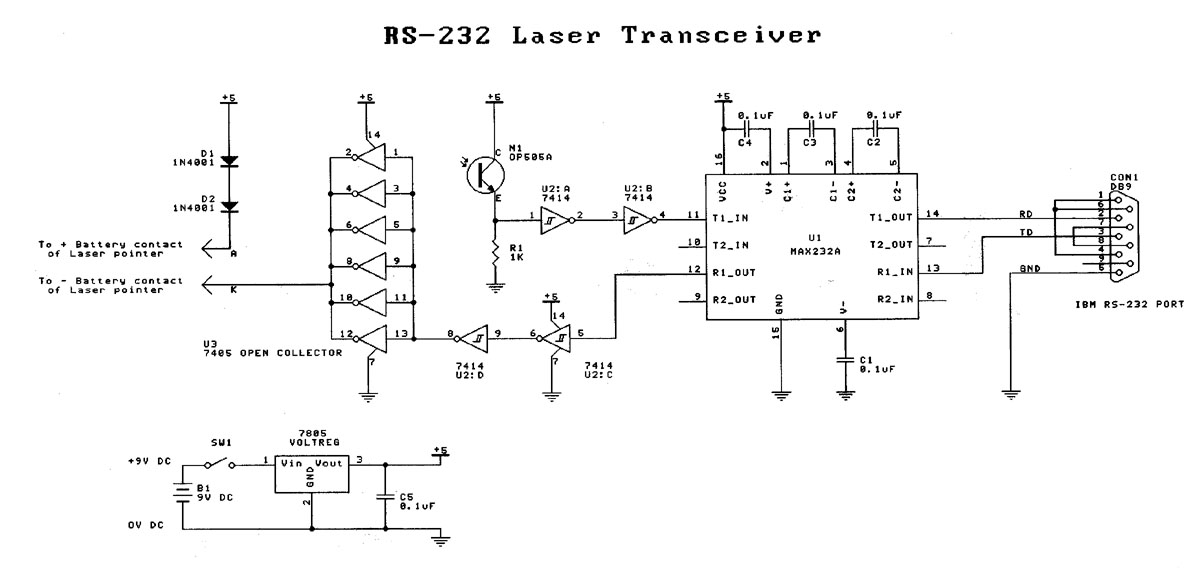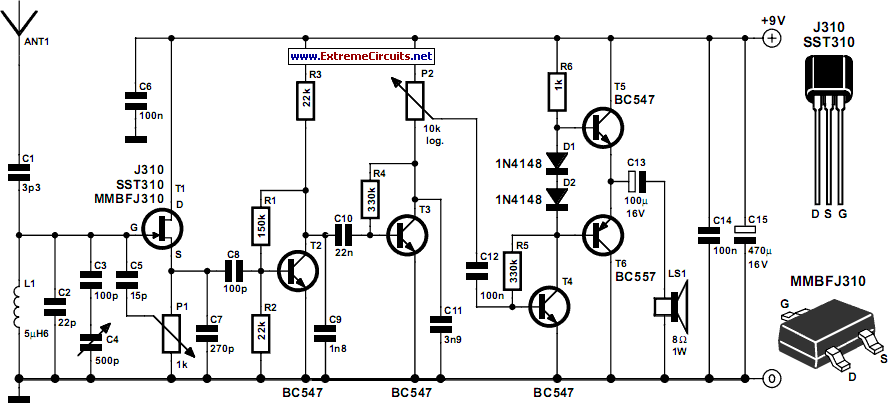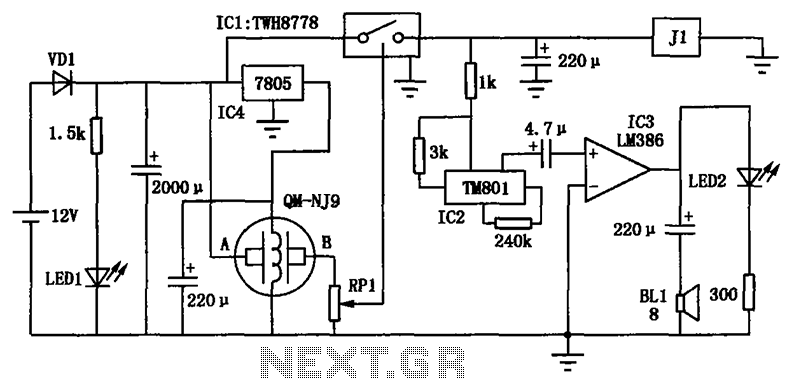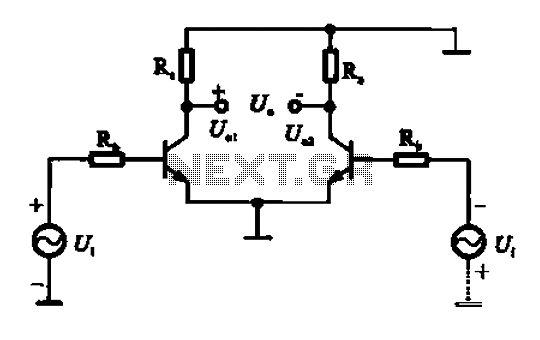
Radio Field Indicator Circuit
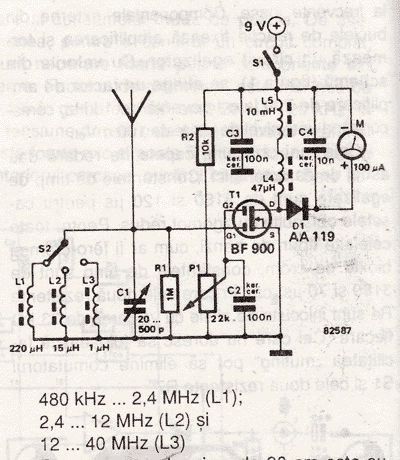
An RF field indicator is needed to verify power stages and transmitter antennas. This radio field indicator allows for the measurement of radiated energy from antennas.
An RF field indicator is a crucial device in the field of telecommunications and broadcasting. It is designed to measure the strength of radio frequency (RF) fields emitted by antennas, which is essential for ensuring the proper functioning of power stages and transmitter systems. The device typically operates by detecting the electromagnetic radiation produced by antennas when they transmit signals.
The RF field indicator usually consists of several key components, including an antenna, a signal processing unit, and a display unit. The antenna is responsible for capturing the RF signals in the vicinity, while the signal processing unit filters and amplifies the received signals to provide accurate measurements. The display unit presents the measured values, often in terms of voltage, power density, or field strength, allowing technicians to assess the performance of the antenna system.
Calibration of the RF field indicator is vital for ensuring accurate readings. This process involves comparing the device's measurements against known standards or reference values. Regular calibration helps maintain the reliability of the indicator, which is essential for compliance with regulatory requirements regarding RF exposure and safety.
In practical applications, the RF field indicator is employed during the installation and maintenance of antennas to verify that they are operating within specified parameters. It assists in identifying potential issues such as signal interference, improper alignment, or inadequate power levels. By providing real-time feedback on RF field strength, the indicator enables technicians to make informed decisions regarding adjustments and optimizations to the antenna system.
Overall, the RF field indicator is an indispensable tool in the telecommunications industry, ensuring that antennas operate efficiently and safely while adhering to regulatory standards.A rf field indicator is required to verify power stages and transmitters antennas. With this radio field indicator you can measure radiated energy from ant.. 🔗 External reference
An RF field indicator is a crucial device in the field of telecommunications and broadcasting. It is designed to measure the strength of radio frequency (RF) fields emitted by antennas, which is essential for ensuring the proper functioning of power stages and transmitter systems. The device typically operates by detecting the electromagnetic radiation produced by antennas when they transmit signals.
The RF field indicator usually consists of several key components, including an antenna, a signal processing unit, and a display unit. The antenna is responsible for capturing the RF signals in the vicinity, while the signal processing unit filters and amplifies the received signals to provide accurate measurements. The display unit presents the measured values, often in terms of voltage, power density, or field strength, allowing technicians to assess the performance of the antenna system.
Calibration of the RF field indicator is vital for ensuring accurate readings. This process involves comparing the device's measurements against known standards or reference values. Regular calibration helps maintain the reliability of the indicator, which is essential for compliance with regulatory requirements regarding RF exposure and safety.
In practical applications, the RF field indicator is employed during the installation and maintenance of antennas to verify that they are operating within specified parameters. It assists in identifying potential issues such as signal interference, improper alignment, or inadequate power levels. By providing real-time feedback on RF field strength, the indicator enables technicians to make informed decisions regarding adjustments and optimizations to the antenna system.
Overall, the RF field indicator is an indispensable tool in the telecommunications industry, ensuring that antennas operate efficiently and safely while adhering to regulatory standards.A rf field indicator is required to verify power stages and transmitters antennas. With this radio field indicator you can measure radiated energy from ant.. 🔗 External reference
